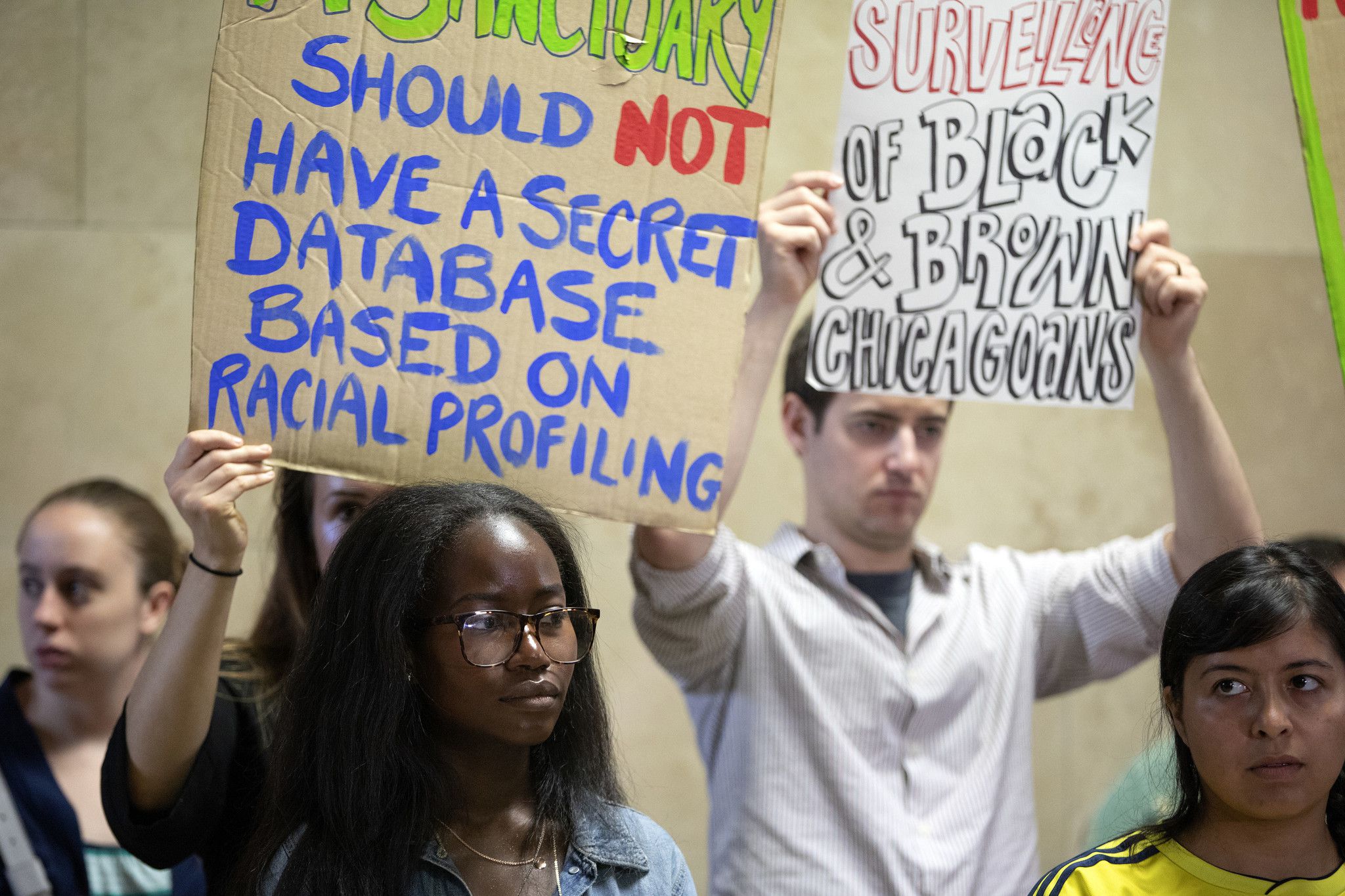- cross-posted to:
- chicago@midwest.social
- socialism
Six years of tireless organizing by a coalition of grassroots activists led to this month’s victory in Chicago.
The Erase the Database Coalition has worked tirelessly for six years to end unjust surveillance and criminalization of Chicago’s most marginalized communities. On September 7, the Chicago Community Commission on Public Safety and Accountability asserted its oversight ability to vote unanimously to end the city’s gang database and start taking steps to live up to the idea of being a true sanctuary city for hundreds of Black and Brown people who continued to be targeted by the Chicago Police Department. Through years of petitioning, FOIA clinics, teach-ins and more, the Erase the Database Coalition continues to inform stakeholders and community members of the impact of surveillance on their lives.
The Erase the Database campaign — envisioned by Black Youth Project 100, Mijente and Organized Communities Against Deportation — came together in 2017 under the premise of creating a true sanctuary city, free of criminalization and policing, for all Chicago residents. The coalition has since grown to encompass a wide array of organizations representing diverse bases across Chicago all challenging ineffective reform and moving toward a world where policing and surveillance become obsolete.
Chicago’s gang database, or “Criminal Enterprise Information System,” was an inherently flawed and harmful system used by the CPD to continuously paint Black and Brown people as the primary purveyors of violence across the city. The database is actually a complex data network of visualization tools and computer applications where information is stored, entered and accessible to members of the CPD and federal law enforcement agencies.
Despite CPD’s work to present Black and Brown folks as dangerous, the city’s Office of Inspector General reports that 13 percent of Black people who experienced use-of-force encounters with a CPD officer were subjected to a less-lethal weapon or a lethal weapon, while 9 percent of white people were subjected to a less-lethal weapon. No white people were subjected to lethal weapons during the period of analysis by the Inspector General. Racist prejudices created large disparities in who was represented in Chicago’s gang database and contributed to Black and Brown folks being overrepresented. Ninety-five percent of the people designated on the gang database were Black and Brown and much of the information in the database was contradictory — for example, one person was simultaneously listed as being a member of two opposing gangs.
However, Chicago isn’t the only city to have a gang database. For years, organizers across New York City have called for the end of their own gang database, called the “Criminal Group Database,” citing similar concerns as Chicagoans, including a lack of transparency, overstatement of gang designation of Black and Brown youth and a lack of formalized policies. The New York City Criminal Group Database started in 2013 with the end of the city’s stop and frisk policy. Earlier in 2023, the Inspector General of the New York City Police Department stated there was no direct link between the Criminal Group Database and adverse outcomes, such as an arrest or harassment by officers. The Office of the Inspector General offered 17 recommendations for the lack of notification to those included on the database of their listing and the disarranged nature of information on the database, such as an insufficient guide for entry criteria into the database. Of the 16,000 entries in the database, 99 percent are Black and Latiné and 10 percent are minors under the age of 18 — with some minors as young as 11. The New York Police Department is not required to alert parents/guardians of the designation, leading youth to continuously be designated as “gang members” in the racist surveillance system.
read more: https://truthout.org/articles/chicago-nixed-its-racist-database-of-gangs-other-cities-should-follow/
archive: https://archive.ph/7v0NL

